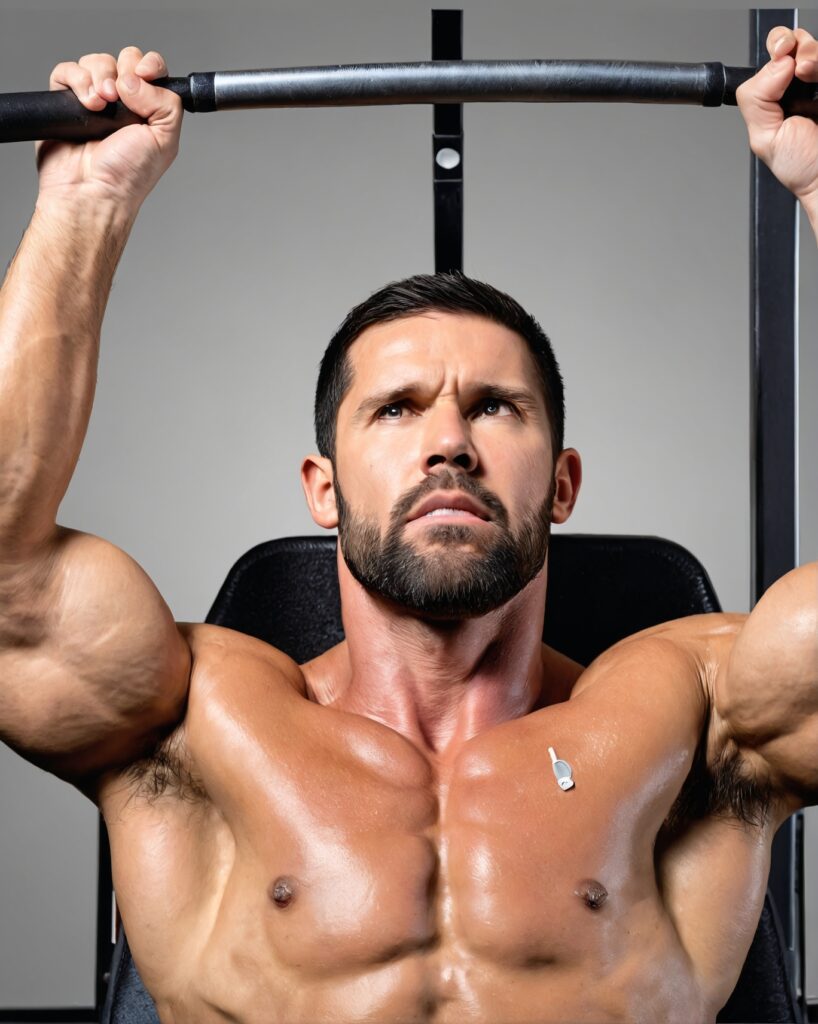Can Lifting Heavy Weight Above Shoulders Cause ETD?
Understanding the Risks

Introduction
Lifting heavy weights, especially above shoulder level, is a common practice in various fitness routines. While this can enhance strength and endurance, it also raises concerns about potential health issues, including Eustachian Tube Dysfunction (ETD). ETD is a condition that affects the ear’s ability to regulate pressure and can cause discomfort or pain. In this article, we explore whether lifting heavy weights above the shoulders can contribute to ETD, the mechanisms behind this, and how to prevent it.
Understanding Eustachian Tube Dysfunction (ETD)
The Eustachian tubes are small passages that connect the middle ear to the back of the nose. Their primary function is to regulate air pressure within the ear and drain any fluid. ETD occurs when these tubes become blocked or fail to open properly, leading to symptoms such as ear pain, a feeling of fullness in the ear, reduced hearing, and even dizziness. The dysfunction can be temporary or chronic, depending on the underlying cause.
How Weightlifting Might Influence ETD
Lifting heavy weights, particularly overhead, can increase intrathoracic and intrabdominal pressure. This pressure can be transmitted to the Eustachian tubes, potentially leading to dysfunction. Here’s how it happens:
- Increased Pressure: During heavy lifting, especially when holding a weight above the shoulders, the Valsalva maneuver (a forced exhalation against a closed airway) is often used to stabilize the core. This maneuver increases pressure in the chest and abdominal cavities, which can extend to the Eustachian tubes.
- Barotrauma Risk: The sudden changes in pressure associated with lifting heavy weights can cause barotrauma, a condition where the pressure difference between the inside and outside of the ear leads to damage. While more common in activities like diving or flying, weightlifting can also trigger this under specific circumstances.
- Strain on the Neck and Head: Overhead lifting places significant strain on the neck and head, potentially leading to muscular tension and poor posture. This strain can indirectly affect the Eustachian tubes, leading to dysfunction over time.
Preventive Measures for Weightlifters
For those who engage in heavy lifting, especially overhead, certain precautions can help minimize the risk of developing ETD:
- Proper Breathing Techniques: Learning to breathe correctly during lifts can reduce the need for the Valsalva maneuver. Breathing out during the exertion phase of a lift can help manage intrathoracic pressure more effectively.
- Moderating Weight Load: Avoiding excessively heavy weights, especially during overhead lifts, can reduce the strain on the body and decrease the risk of pressure-related issues in the ears.
- Posture and Form: Maintaining proper posture and form during lifting is crucial. Ensuring that the neck and head are aligned and not strained can help prevent indirect pressure on the Eustachian tubes.
- Gradual Progression: Gradually increasing the weight load allows the body to adapt and strengthens the muscles supporting the neck and head, reducing the likelihood of ETD.
When to Seek Medical Attention
If you experience symptoms of ETD after lifting heavy weights, it’s important to consult a healthcare professional. Persistent ear pain, hearing loss, or a feeling of fullness in the ears should not be ignored. A doctor can perform tests to determine if the Eustachian tubes are functioning properly and recommend treatment options, which may include decongestants, nasal sprays, or, in severe cases, surgical intervention.
Also read: Weights: The Foundation of Strength and Fitness
Conclusion: Can Lifting Heavy Weight Above Shoulders Cause ETD?
While lifting heavy weights above the shoulders can potentially contribute to Eustachian Tube Dysfunction, understanding the risks and implementing preventive measures can help mitigate these effects. By using proper breathing techniques, moderating the weight load, and maintaining good posture, weightlifters can continue their routines without compromising their ear health.